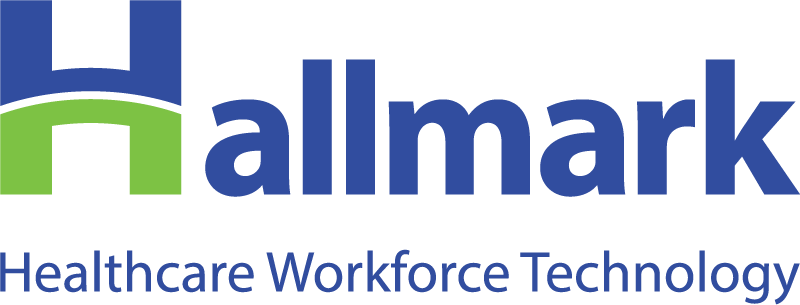Health systems and medical groups can only achieve maximal results if they’re working in perfect alignment with their providers. That means everyone drives towards the same patient care outcomes, provider productivity, and financial objectives. Provider compensation plays a central role here, and “perfect alignment” can only happen if the organization can transparently communicate clear and credible information about provider compensation. That’s where physician compensation software comes in.
“Transparency [in compensation] fuels better decision-making, and it aligns goals,” says Deirdre Franzese, the Director of Finance at BayCare Medical Group, who co-authored the white paper “Physician Network Growth and Stabilization: How Transparency is Foundational to Sustainability” with Hallmark’s Chief Growth Officer Dave Butcher.
She explains the mechanism by which transparency translates into alignment is the immediate feedback it generates. Providers can see how their actions correlate with how they’re being compensated. In other words, if providers can see how incentive-, value-, and quality-based pay elements affect their pay, they can adjust their behavior accordingly.
It also empowers providers to answer their questions and verify compensation-related data. Without adequate visibility, providers can be left with questions and objections about their pay, instantly creating friction with administrators, when both groups should be in alignment. The growing complexity of provider compensation worsens this issue, leading to more confusion and frustration. “It could create some tension with the physicians if they don’t understand how they’re being paid,” says Franzese.
Centralized Source of Truth Solution
Access to a centralized source of truth solution that can automatically aggregate real-time data from all relevant sources and present it for user consumption is fundamental to creating transparency.
Without it, administrators have to gather information manually from disparate, sometimes contradictory sources, and transferring and disseminating that information could introduce errors in the data. This can result in a delay in reporting to providers and a decline in physician satisfaction and retention.
This is a key point: when medical directors or compensation administrators communicate only occasionally with providers, and those experiences are frustrating and not fruitful, it’s just not enough to move the needle for the providers or to help them understand how their performance is impacting their compensation. Organizations can’t bring providers and administrators into alignment if their approach creates tension.
Add physician compensation transparency and achieve peace of mind
Listen in as Dave Butcher, Chief Growth Officer at Hallmark weighs in on the element of transparency that’s critical to achieving organizational goals.
Administrators also reap the benefits of transparency
It’s not just the providers who benefit from transparency: implementing an accessible, data-rich platform designed specifically for the compensation function means administrators and medical directors can execute the compensation program much more effectively and reliably. Even better, they can step back from constantly reacting to questions or issues and putting out fires to focus on working strategically with providers. For example, transparency sets the stage for productive, collaborative communications:
- When providers can access relevant information on their own through physician compensation and productivity software like Heisenberg II Physician Compensation (HII PC), it minimizes or eliminates unnecessary and low-quality interactions between admins and staff. “Heisenberg is now the first place we send providers for questions, so they can help themselves rather than turning to an analyst,” says the Director of Physician Contracting at an Idaho-based health system.
- Then, when discussion is genuinely needed, transparency can make those interactions more meaningful and help them to foster trust rather than frustration. Medical directors can sit down with their providers and engage directly and immediately with them, with all parties looking at the same information drawn from a source of truth.
Benchmarks come into this too: providers must feel confident that the compensation model and terms with which they’re working are fair and competitive. Otherwise, their engagement and performance will suffer. That requires insight into adequate Fair Market Value (FMV) and benchmarking data that shows where they stand against their peers in the same markets, down to their specific specialty. When that information is obscured or unavailable, it can foster mistrust and dissatisfaction, which are relationship and performance deterrents. Physician Compensation and Productivity Software like HII PC can harness this information and offer dashboards and reports that turn it into actionable performance data.
Credible communication and openly available physician compensation information are foundational for the shift to value-based reimbursements.
Administrators must ensure their compensation models are incentivizing the providers to do the right things. The more complex the model – like those that mix a base salary, productivity incentives, and other quality-based reimbursement measures at the same time – the more critical it is that both providers and administrators can gain access to clear, credible information.
It’s worth noting that all of this affects patients too: the whole point of the shift to value-based models is to ensure that patients have a higher quality experience and realize improved outcomes. When administrators and providers can align their work around that goal, everyone benefits. The key to success here is straightforward: the variabilities and disparate elements that govern provider compensation must be integrated and aggregated into a single source of truth where they can be calculated, adjudicated, and tracked. With a solution at hand, like HII PC, health systems and medical groups can generate the transparency needed to drive everyone toward the same goals.
